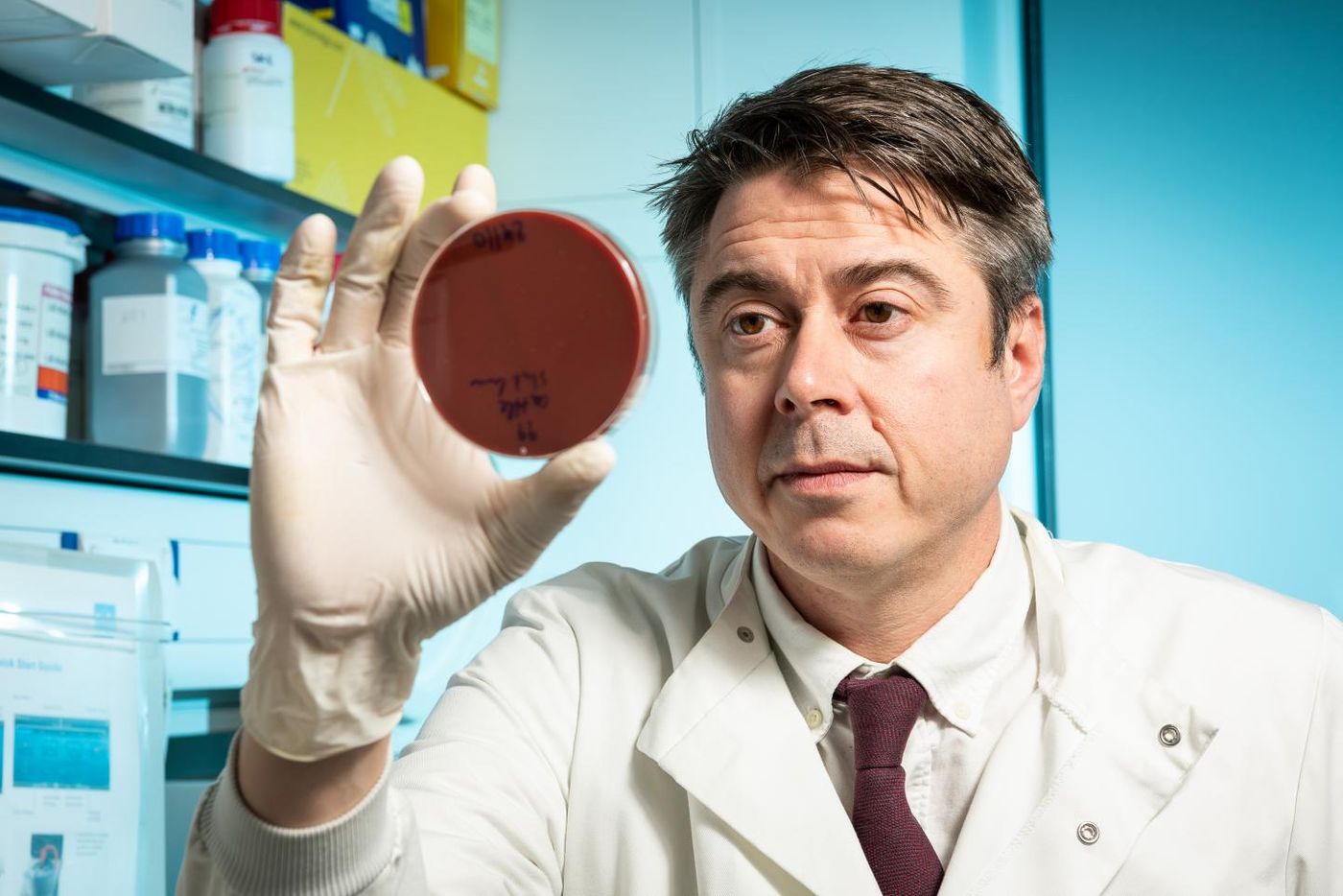A Deadly Microbe Lurks on the Skin of Many People
There are some well-known bacterial pathogens that can present a major threat to health, but a lesser-known microbe may be just as big of a danger, and it’s on everyone’s skin. Staphylococcus epidermidis is related to MRSA (methicillin-resistant Staphylococcus aureus), and can cause dangerous infections following surgical procedures. It’s often ignored, however, because it’s so ubiquitous. Now, scientists at the Milner Centre for Evolution at the University of Bath are sounding the alarm; they suggest that S. epidermis should be examined more closely and that surgery patients who are at high risk of infection should receive additional precautions.
Reporting in Nature Communications, the researchers have found 61 genes that enable S. epidermis to go from harmless to pathogenic. A better understanding of how the microbe becomes pathogenic may one day enable clinicians to look for risky S. epidermis strains on patients before surgery happens, potentially preventing post-surgery infections.
"Staphylococcus epidermidis is a deadly pathogen in plain sight. It's always been ignored clinically because it's frequently been assumed that it was a contaminant in lab samples or it was simply accepted as a known risk of surgery,” explained the leader of the study, Professor Sam Sheppard. He is the Director of Bioinformatics at the Milner Centre for Evolution at the University of Bath.
For this study, the researchers harvested samples from patients that had experienced infections after a variety of surgeries including knee replacements and fracture repairs. They were then compared to samples from healthy individuals.
This allowed the research team to find the bacterial genes that were differentially expressed in the two groups of people. There were 61 genes in the pathogenic bacteria that were not identified in the majority of the healthy controls. The researchers were surprised to also find some pathogenic bacteria in a few of their healthy samples.
The genes they found can help the pathogenic microbe grow in the bloodstream of the host and avoid the immune response. The genes can make the surface of the cell sticky; microorganisms can then create a biofilm. Biofilm communities of microbes are known to be resistant to the effects of antibiotics.
"Post-surgical infections can be incredibly serious and can be fatal. Infection accounts for almost a third of deaths in the UK so I believe we should be doing more to reduce the risk if we possibly can. If we can identify who is most at risk of infection, we can target those patients with extra hygiene precautions before they undergo surgery,” said Sheppard.
"Because the bug is so abundant, they can evolve very fast by swapping genes with each other," he added. "If we do nothing to control this, there's a risk that these disease-causing genes could spread more widely, meaning post-operative infections that are resistant to antibiotics could become even more common."
"Prosthetic joint replacement surgery helps many patients to live independent and pain-free lives, but can take a catastrophic course through S. epidermidis infection,” said Professor Dietrich Mack, from the Bioscientia Institute for Medical Diagnostics GmbH in Germany. "These infections are difficult to diagnose and there is hope that disease-associated genes may help to separate harmless skin isolates from disease-causing S. epidermidis strains in the clinical laboratory. This needs to be addressed in future studies."
Sources: AAAS/Eurekalert! Via University of Bath, Nature Communications









